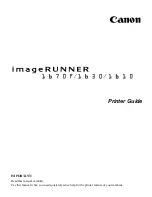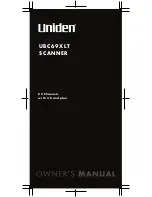
36
TRUNKING OPERATION
The scanner tracks transmissions that
use the Motorola
®
Type I and Type II
(such as Smartnet and Privacy Plus)
and hybrid analog trunking systems,
plus GE/Ericsson (EDACS) and EF
Johnson (LTR) type systems, which
are extensively used in many commu-
nication systems.
Trunking systems allocate a few fre-
quencies to many different users.
When the mobile unit transmits a sig-
nal, one frequency is chosen from
among the allocated frequencies in
that trunking system. The user’s ID
talk group is sent with the signal.
To receive trunking signals, you must
store all the trunking group frequen-
cies in one bank (see “Storing Known
Frequencies into Channels” on
Page 22) and input ID codes in the ID
memory (see “Finding and Storing Ac-
tive Frequencies” on Page 25). To lis-
ten to the transmission, the mode of
the programmed channel must be the
same as that of the trunking channel
(LT, MO, or ED).
When an ID code is received, the ID
list for the bank is searched, and if
found, the text name stored for the ID
appears. If not found, scanning re-
sumes immediately unless the bank is
in open trunking mode.
Note: There might be more than one
talk group transmitting at a time in
some Motorola trunking systems. If
you set the scanner to manually tune
in Motorola trunking mode, you will
hear the talk group on that channel,
but the display will alternate between
all active IDs.
Trunking group frequencies are in-
cluded in the supplied
Police Call
Trunking Guide
. Frequency fleet map
and talk group information is also
widely available on the Internet, at
www.trunkscanner.com
for example.
UNDERSTANDING
TRUNKING
In the past, groups that transmit fre-
quently, such as police departments,
could transmit on only a few frequen-
cies. This resulted in heavy traffic and
often required 2-way radio users to
wait for a specific frequency to clear
before transmitting. Trunked systems
allow more groups of 2-way radio us-
ers to use fewer frequencies. Instead
of selecting a specific frequency to
transmit on, a trunked system choos-
es one of several frequencies when
the 2-way radio user transmits. The
system automatically transmits the
call on that frequency, and also sends
a code that identifies that 2-way radio
user’s transmission on a control chan-
nel.
This scanner lets you easily hear both
the call and response transmissions
for that 2-way radio user and therefore
follow the conversation. For EDACS
and Motorola (above 806 MHz range),
the scanner monitors the control chan-
nel between each transmission to iden-
tify talk groups. For some Motorola
(under 512 MHz range) and LTR sys-
tems, the scanner uses the subaudible
data sent with each transmission to
identify talk groups.
20-196a.fm Page 36 Friday, June 2, 2000 3:48 PM















































